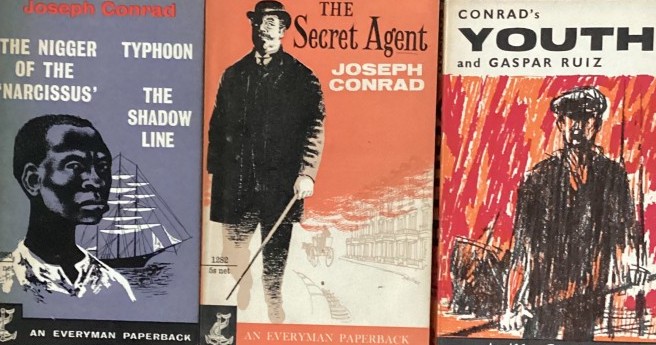Inspiring Older Readers
 posted on 01 Sep 2022
posted on 01 Sep 2022
Vintage Everyman Paperbacks
The Everyman library of book titles must be one of the better known book imprints and, in their way, as immediately identifiable as Penguin books. Established in 1905 by the publisher, J.M. Dent, working in partnership with the poet and editor Ernest Rhys, their mission was to produce beautifully designed but affordable hardbacks featuring the 1000 essential classics of world literature.
The key to their success was a real commitment to high quality design – they engaged some of the foremost design artists of their day – and a brand identity that was inspired. The name, Everyman, was the result of a Rhys brainwave:
‘Good titles like good lyrics drop from heaven. The finding of one, arresting and explicit, was the grand crux. We must have made up a score of possible names for the new series ... but not one of them quite satisfied us. Then one day, walking along Garrick Street past the doors of the Garrick Club, not thinking of anything in particular, I suddenly remembered the lines of the old mystery play: "Everyman, I will go with thee and be thy guide, In thy most need to go by thy side"—that gave me the cue, and sent me marching into the office where the old chief sat. "Eureka!" I said. "I have found the title— Everyman's Library." He stared for a moment incredulously, then said, "Why, yes, you have got it!"’
As you might expect, Everyman books have their devotees and fanatics who want to collect everything they produced but this is one of the few communities in which paperback books are generally unwelcome – or, at best, treated as unwanted visitors.
Everyman finally gave in to the paperback revolution in the early 1960s but their evident reluctance to enter the market meant they were late to the party and they were never seen with affection by lovers of the hardbacks and were chasing after an audience that was already adequately served by publishers who had already scooped the pool.
Even now, the paperbacks are clearly thought of as a Cinderella product and the Everyman Library collectors website damns them with faint praise, noting that completists will have to at least collect the handful of titles that were produced only as paperbacks:
“Many collectors prefer not to collect the paperback editions, but if one's aim is to assemble a collection containing every EML title from 1906-1982, one will at least have to acquire those titles published only in paperback”
The three examples of the artwork of the early 60s incarnation of Everyman paperbacks that have come into my possession via a charitable book sale makes me wonder why these early examples of book design are so lightly dismissed. I think they are highly desirable and aesthetically stunning.
All three books come from the pen of Joseph Conrad but have covers by different artists. The Secret Agent has a publication date of 1961 and has a cover illustration from Ian Smyth who uses the predominant orange colour to suggest the London fog that partially obscures the perambulations of the Anarchist sympathiser, Verloc.
The second example is the 1962 imprint of three Conrad short stories, The Nigger of the ‘Narcissus’, Typhoon and The Shadow Line. The cover artwork comes from William Stubbs who features a head and shoulders of a black man in front of a clipper ship with an overall dull purple colour wash.
Youth and Gaspar Ruiz make up the third volume from 1963 illustrated by James Boswell. In what looks like a mix of pastel and crayon and Expressionist depiction of a young man in a flat cap stands in front of what looks like a listing merchant ship.
All three covers are arresting and immediate – so I’m delighted to add them to my collection for a modest donation. I, for one, will be keeping my eyes open for examples of this first generation of Everyman paperback and I’m thrilled to think that collectors of the hardback Everyman Library are likely to turn their noses up at them. All the more for me.
Terry Potter
September 2022


